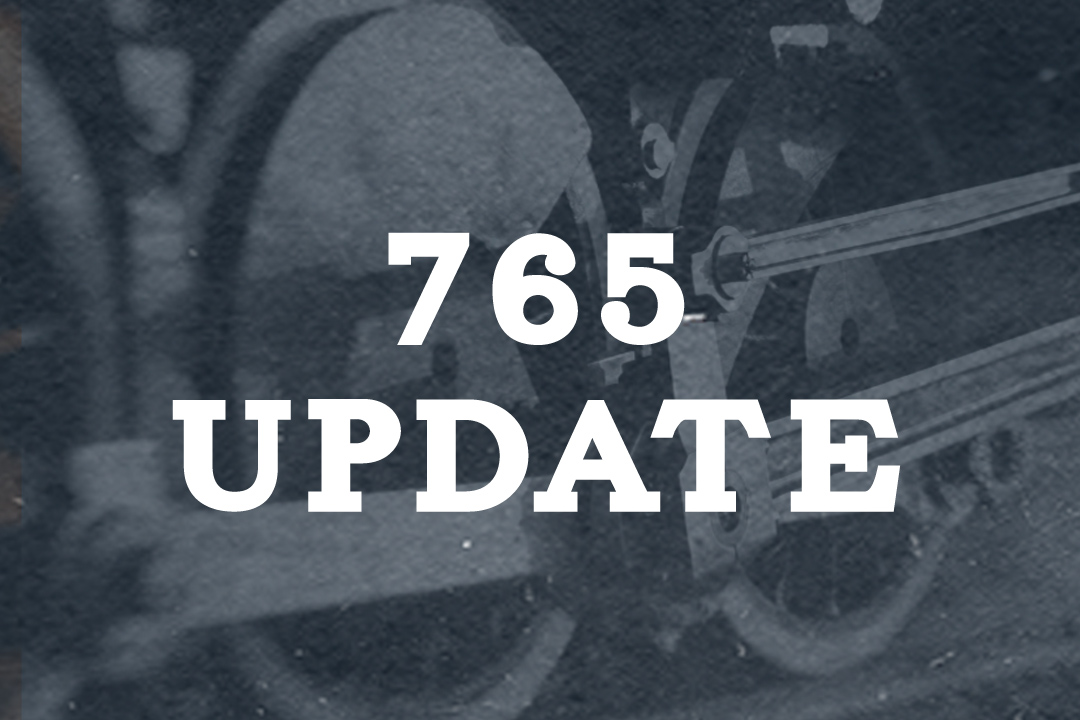Submitted by Steve Winicker.
LAST WEEKENDS SHOP ACTIVITY
Friday was spent cleaning up the shop and chasing last minute parts needs. John agreed to delay his vacation packing to turn out a pin, Glaze said they would turn out a special pipe nipple by next Friday for the water column drain and PWC said they could make a bowl shim for the aux. tank by next Friday as well. Hope they all come through. Zach had the water glasses repacked other than the outer shield. I have ordered some gasket material to finish that part off.
Saturday saw a small but good crew finish the auxiliary tank conduit. John did come through with the pin. Taylors installed Sairset in the staybolt telltales and finished off with installing most of the brick.
Sunday George Butzin and Craig Dickson put removed the pipe cap and installed the pop valve on the locomotive. Also, loosened all the washout plugs but three and removed the spring compressor in the buffer. I sandblasted on the auxiliary tank with an assist from Joe Knapke. One side and the two ends are sand blasted. Still to do: ½ of one side and the roof. Pray for good weather next weekend.
UPCOMING ACTIVITIES
Finish blasting the auxiliary tank, wire brush around rivets, put in new plugs made by Daniel Kester in the auxiliary tank, drill holes for fasteners on the auxiliary tank ladder, install shut off valve on rail washer line finish water glasses and water column maintenance, wash the 765 boiler, re-hook up the rail washer control valve, reorganize the arch brick in the firebox a bit and a few other items which are written on the white board in the shop.
SAFETY SENSE
The U.S. Consumer Product Safety Commission estimates that each year, about 4,000 injuries associated with electric extension cords are treated in hospital emergency rooms. About half of the injuries involve fractures, lacerations, contusions or sprains from people tripping over extension cords. It is also estimated that about 3,300 residential fires originate with extension cords each year, killing 50 people and injuring about 270 others. The most frequent causes of such fires are short circuits, overloading, damage and/or misuse of extension cords.
Some recommendations for the safe use of extension cords are as follows….
· Use extension cords only when necessary and only on a temporary basis. Do not use extension cords in place of permanent wiring.
· Do not remove the ground prong of an electrical plug. If plug prongs are missing, loose, or bent, replace the entire plug.
· Do not use an adapter or extension cord to defeat a standard grounding device.
· Use extension cords that are the correct size or rating for the equipment in use. As a very rough guide, the diameter of the extension cord should be the same or greater than the cord of the equipment in use. The must is to use an extension of an amp rating which is equal to or greater than the amp rating of the device/tool being powered by the extension cord.
· Only use cords rated for outdoor use when using a cord outside for continuous extended periods of time.
· Keep electrical cords away from areas where they may be pinched and areas where they may pose a tripping or fire hazard.
· Always inspect the cord prior to use to ensure the jacket and /or insulation isn’t cut or damaged. Discard damaged cords, cords that become hot, or cords with exposed wiring.
· Never unplug an extension cord by pulling on the cord; pull on the plug.
Extension cords are a very valuable tool but, like every tool, there are safe practices and procedures that need to be followed for their safe operation


